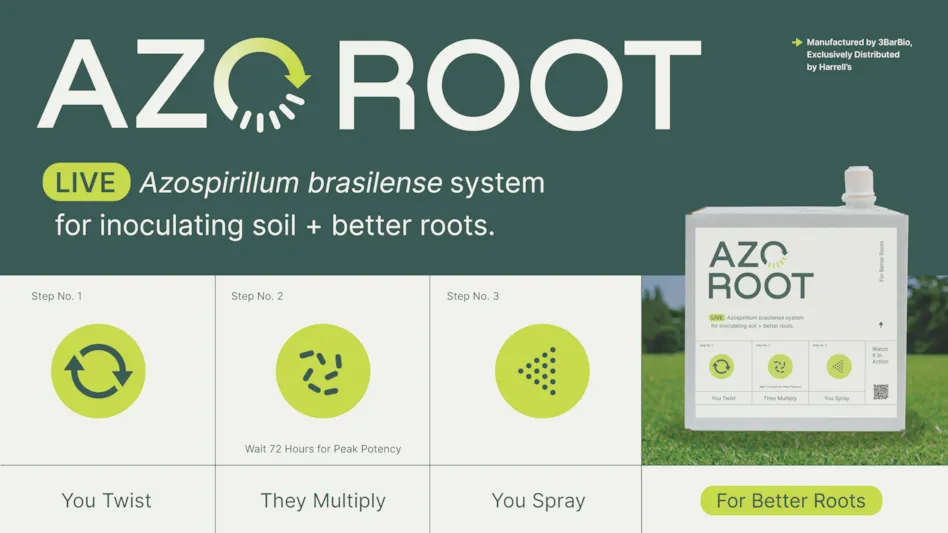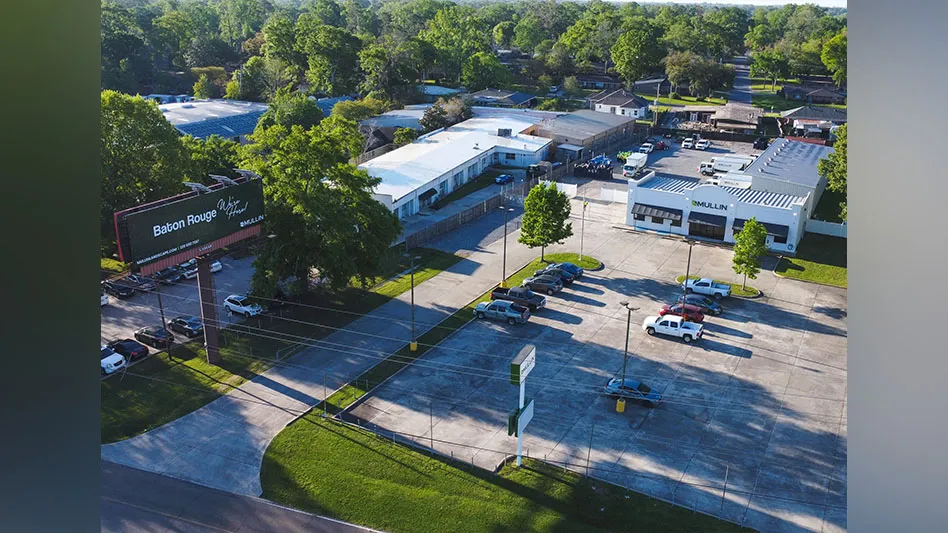Rising natural gas prices, an increased focus on bio-fuel crops and growing offshore demand have combined to feed a “perfect storm” that has driven fertilizer costs to record heights. In many markets, fertilizer costs have nearly doubled since 2007. Additionally, the growing environmental movement is raising concerns about nitrate and phosphate leaching and runoff. The industry has tried many approaches to address these concerns, with only partial satisfaction. Products that perform well may not be economical or may contribute to runoff. Environmentally friendly products may be costly or offer lackluster performance. However, a significant body of research indicates that a new category of fertilizer catalysts offers relief to turf managers.
THE NEED FOR NUTRIENTS
Like all living things, plants require various types of nutrients. Non-mineral nutrients – carbon, oxygen and hydrogen – are readily available from water, sunlight, soil and the atmosphere. Plants also require more than a dozen primary mineral nutrients – macronutrients and micronutrients, most of which are obtained from the soil and from decaying plant matter. The three most important macronutrients are nitrogen, phosphorus and potassium, which provide raw materials that the plant needs at a molecular level to grow and thrive. Plants use these nutrients in large amounts in order to grow and resist disease. Nitrogen is necessary for all metabolic processes, including protein and energy synthesis. It is a component of chlorophyll, and it is associated with rapid plant growth and vigor. Phosphorus plays a key role in photosynthesis and is necessary to support plant maturation, rapid growth and stress resistance. Potassium is necessary for protein synthesis, photosynthesis and disease resistance.
THE ROLE OF MICROBES
The oldest form of life on Earth, microorganisms (or microbes) are tiny single-cell organisms, such as micro arthropods, nematodes, protozoa, fungi, algae and bacteria. All plants and animals depend on microbes in order to digest food.
Microbes are everywhere, with especially high concentrations in the soil. A single teaspoon of healthy soil may contain 25,000 algae, more than 120,000 fungi and more than 1 billion bacteria. Using genetic analysis, researchers estimate that a biologically rich soil sample may contain as many as 10,000 distinct species of bacteria. Of these many species, only about 1 percent or fewer can be cultured (isolated and grown synthetically). Even less are known to have specific soil functions.
Microorganisms play active roles in many aspects of the soil environment in which they live. Their activity has measurable impact on organic matter and nutrient availability, nutrient cycling and uptake (by the plants), and soil structure and function. Living in the soil, this community of microbes will metabolize a variety of organic and inorganic materials. It is important to note that microbes do not all process the same nutrients. Different species metabolize different food sources; some species may do a less effective job in the absence of a microbial community structure that aids efficient metabolic functioning. The microbes absorb nutrients, process them and release unique biochemicals – a rich variety of enzymes, proteins, carbohydrates, organic acids and many others. The soil solution holds these exuded biochemicals, which play critical roles in the complex array of plant/microbial interactions.
Some of the most intriguing current research points to biochemical communication as a mechanism for many of the observed interactions in growing plants. For example, bacteria will multiply in the presence of nutrients, but they also seem to be receptive to biochemical signals indicating that the food reserves are limited or that conditions are not otherwise optimal, which may slow down or stabilize population growth. Other signaling agents – for example, the release of root exudates that nourish the indigenous microbial community – may be required to elicit certain functions from a plant. Adding microbes to fertilizer blends (along with concentrated solutions of their biochemical byproducts), appears to help increase the plant’s efficient use of essential nutrients.
It is important to note, however, that recent research points to the likelihood that the product’s metabolic capacity, rather than organism “counts”, may be the critical variable in enhancing fertilizer efficiency. In other words, products with a broad metabolic profile may metabolize a wider range of food sources, making them more available to the plant. Improved nutrient uptake by the plant will, in turn, build greater biomass (“roots and shoots”) and better allow the plant to reach its full genetic potential.
A NEW CATEGORY: FETILIZER META-CATALYSTS
The concept of adding microbes or other enhancements to fertilizer is not new. However, much of the focus has been placed on growing and harvesting individual strains that have been cultured in high concentrations in the laboratory.
A fertilizer meta-catalyst, on the other hand, starts with a base stock of naturally occurring microbes that is highly diverse – both microbiologically, as shown in plate counts, and in metabolic capacity – that is, the ability to metabolize a broad range of food sources. Rather than just containing a few isolated species, this meta-catalyst base stock might include scores or hundreds of different strains of organisms living in an interactive community that reflects the soil’s extraordinarily rich microbial environment. In order to commercialize a meta-catalyst, the diverse base stock is fermented in community, and the microbes are harvested along with a fermentation medium, which contains the rich deposits of naturally exuded biochemicals. The better products are taken through a stabilization process to make them easier to use and to extend their shelf life. They are tested to assure that they are free of known plant and animal pathogens, and then profiled for production batch management and traceability to ensure consistency. In many cases, the base solution may be blended with other beneficial materials such as humic acid, nutrients or other biostimulants to bundle together benefits for the plant and soil.
The end result is a fertilizer meta-catalyst that contains viable, beneficial bacteria, a complex of fermentation byproducts (biochemicals) and other materials that increase the efficient processing, conversion and uptake of soil-applied nutrients. The meta-catalyst may be added to both granular and liquid fertilizer products to enhance performance. Currently, one such product, NutriLife, is commercially available as a meta-catalyst for fertilizers and has been tested for uses in both lawn care and golf.
PROVEN RESULTS
Research on fertilizer meta-catalysts shows promising results. More than 400 field, university and third-party studies have been conducted on such blends, and the products have been proven effective in improving nutrient uptake into plants. The potential implications are enormous – opening the door to reduced fertilizer application rates, improved fertilizer performance and the possibility of reduced leaching and runoff of soil nutrients.
Some of the studies suggest that this microbial technology can increase nutrient uptake in grass and other plants by 25 percent or more. A University of Florida study on perennial ryegrass and hybrid Bermuda grasses showed that a soil application of the meta-catalyst increased nitrogen uptake over the control by between 50 percent and 75 percent at application rates of three ounces and six ounces per thousand square feet, respectively.
Meta-catalyzed fertilizer appears to have a significant impact on the plant itself—as measured at both roots and shoots. Auburn University conducted a controlled study in bentgrass. Plots were treated either with a conventional 19-5-9 fertilizer or a meta-catalyzed 19-5-9 fertilizer, each applied at a rate of four pounds per 1,000 square feet. Bentgrass in the treated plots had 91-percent higher fresh root weight, 105-percent higher fresh shoot weight and 37-percent higher average diameter.
In a similar Auburn study of root growth in tall fescue, samples treated with the microbial technology showed increased biomass, especially root mass, in less than four weeks. Deeper roots provide more surface area for nutrient uptake and can draw on soil deposits of nutrients that have not yet been depleted. A healthier root structure can also help plants better survive stress, even in dry soils. Enhanced nutrient uptake is particularly important for new plant establishment.
IMPLICATIONS
When plants use nutrients more efficiently, it stands to reason that it is possible to use less fertilizer – or to use fertilizer with a lower ratio – to get the same results. When nutrient uptake is increased by 25 percent or more, it is possible to reduce fertilizer application rates by up to 25 percent without sacrificing performance. For example, a turfgrass that is normally fertilized at a rate of four pounds per 1,000 square feet could be treated at just more than three pounds per 1,000 square feet with a meta-catalyzed blend. Similarly, if a ton of fertilizer treats 11.5 acres at the four-pound rate, a ton of meta-catalyzed fertilizer treats 14.4 acres, because it is applied at a lower rate. In either case, the use of the enriched blend could reduce costs by 15 to 20 percent or more.
As an alternative to applying the lower rate, it is possible to use a meta-catalyzed fertilizer with a reduced nutrient content. For example, instead of applying conventional 30-0-10 fertilizer at four pounds per 1,000 square feet, an Auburn study says it is possible to apply a meta-catalyzed 22-0-8 fertilizer at the same rate to achieve the same results. In 2004, an Auburn team fertilized transplanted broccoli plants. Plants were broken into four groups. Two groups were treated with conventional fertilizer with 80 percent and 100 percent nitrogen, respectively. Two other groups were treated with meta-catalyzed 80-percent or 100-percent fertilizer. After 32 days, plants in the meta-catalyzed fertilizer groups were more than 30 percent larger than the other plants, and the 80-percent meta-catalyzed fertilizer significantly outperformed the untreated 100-percent fertilizer.
Clearly, there are some advantages to focusing or improving the efficiency of fertilizer use, as the examples above illustrate. That said, the use of meta-catalyzed blends or any other enriched fertilizers is not a panacea for undisciplined turfgrass or horticultural management. Sound agronomic practices – including the measurement and management of soil nutrient levels – remain essential to any turf or landscape professional’s long-term success.
The use of meta-catalyzed fertilizer can provide several environmental benefits. First, such products can reduce the amounts of fertilizer that must be added to meet plant nutrient requirements. Second, increases in plant and root mass will enable plants to absorb more nutrients from the soil. As a result of reduced application rates and improved uptake, there is less residual material to leach or run off into the water table. A study conducted by Illinois-based Arise Research & Discovery found that the use of such meta-catalysts reduced nitrate concentrations at 12-inch depths by 48 percent, and 57 percent at a depth of 30 inches.
SUMMARY
A tough economy forces many to tighten budgets, and for turf managers, the rising cost of fertilizer is a challenge. Until now, solutions have forced users to trade off – either on cost, performance or environmental impact. Microbial-based fertilizer meta-catalysts represent a new product category that may enable users to hold or reduce costs without sacrificing performance or environmental health.

Explore the January 2009 Issue
Check out more from this issue and find you next story to read.
Latest from Lawn & Landscape
- Davey announces market expansions, promotions
- Mowhawk mowers launches new line of zero-turns
- Full steam ahead
- SiteOne adds new premium natural stone product line
- Higher expectations
- BRUNT Workwear rolls out warm weather lineup
- Exmark introduces Quest V-Series Electric Zero-Turn Mower
- CASE debuts newest product offerings





